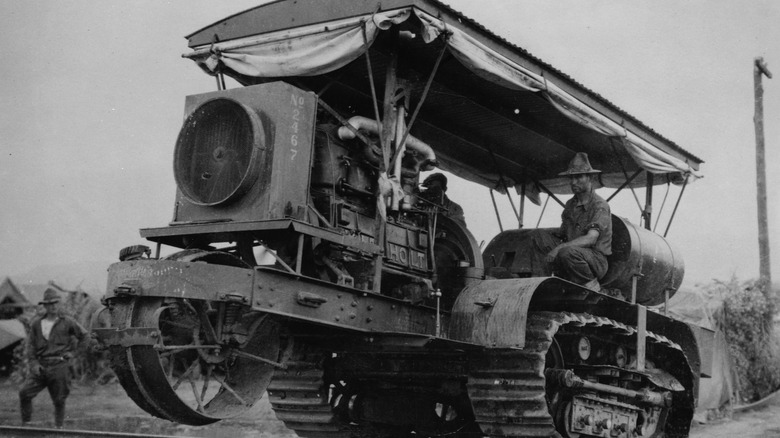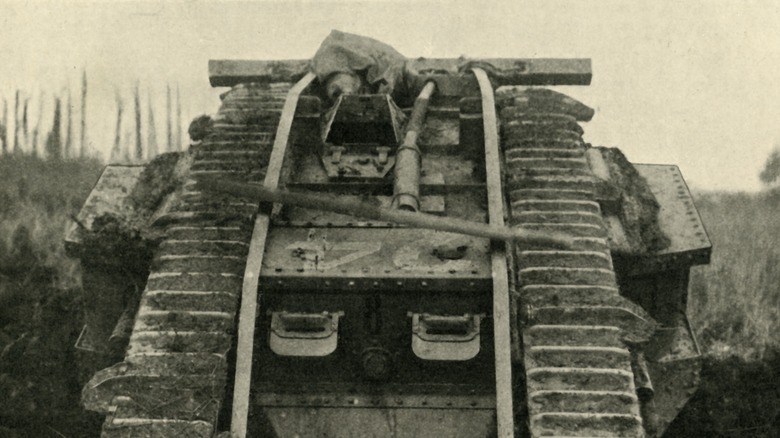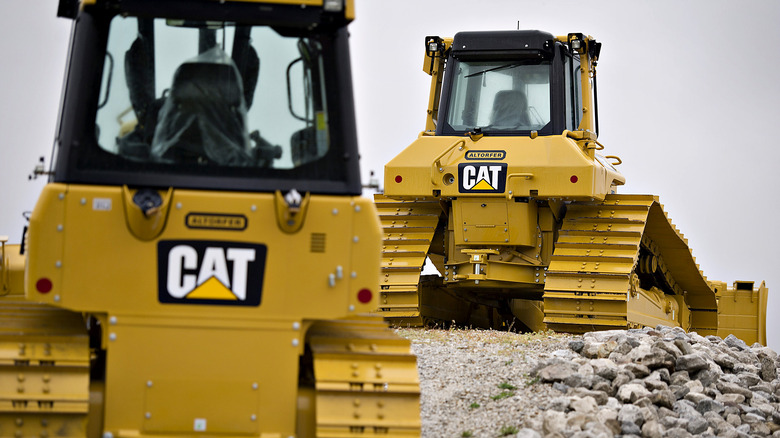
Library Of Congress/Getty Images
War, in all its horrors, tends to breed innovation and accelerate technological development. There’s hardly a better example than the First World War, where the stalemate of trench warfare on the Western Front was broken by the introduction of the tank, which offered mobility, endurance, and firepower that cavalry units could not. In fact, some of the most impressive tanks of all time were developed thanks to the technology that emerged during this period.
That tanks played a key role in the Allies’ ultimate victory in the First World War may be common knowledge, but the impact of tractors is seldom discussed in scholarly works and history books. In particular, the earliest tractors of the company we today know as Caterpillar arguably altered the course of history and changed warfare forever. For one, these tractors served a similar purpose to tanks and acted as a sort of bridge between traditional and modern warfare, demonstrating the transformative potential of mechanized vehicles on the battlefield.
Caterpillar’s tractors were used in battle and inspired the first tank

Print Collector/Getty Images
In 1914, shortly before the war broke out, British Army Officer Ernest Dunlop Swinton received a letter from his friend Hugh Marriott. A mining engineer by trade, Marriott would often discuss the latest technological innovations with Swinton, especially those he believed might have a military application.
In that particular letter, Marriott described a «Yankee machine» that he thought might be useful for hauling artillery. «This machine climbs like hell,» Marriott wrote, adding that it is called a «Holt Caterpillar Tractor.» Swinton was intrigued, but his superiors weren’t as impressed. When the war broke out, Swinton floated the idea again, but Minister of the War Herbert Kitchener dismissed it.
Winston Churchill, who at the time served as First Lord of the Admiralty, thought there was something to the concept. He sanctioned the expenditure of £70,000 in Admiralty funds to finance the development of what would later become the tank. Shortly after that, British Mark I tanks debuted on the battlefield.
Holt Caterpillar track-type tractors themselves were used to haul artillery by both British and French troops. This was convenient because they had previously been imported to Europe for commercial use, but additional orders were made during the war.
WWI aftermath: from Holt to CAT

Bloomberg/Getty Images
As Holt was aiding the Allies in the war effort, the domestic market was being dominated by a different company, C.L. Best. Both prospered and made millions during this period. However, when war came to an end, the lucrative government contracts Holt had been awarded ended with it. C. L. Best was also struggling to stay afloat.
Though both companies were facing challenges, C. L. Best had the infrastructure, manufacturing facilities, and dealer network, while Holt had the Caterpillar name and trademark. The solution naturally presented itself: a merger. In 1925, the two companies officially decided to join forces, forming a new entity: the Caterpillar Tractor Company, or CAT, as it is now known around the world.
Today, Caterpillar has a market cap in the neighborhood of $140 Billion and is among the 100 most valuable companies on the planet. CAT’s name can be found on a wide variety of products, from heavy equipment and machinery to smartphones, like the iconic CAT S60, which is about as rugged as the tractors it used to build a century ago.